Every sea captain dreams of their own remote tropical island — with accessories like a jungle cabin adorned with hunting spoils and a twin-rigged, high-powered vessel. Well, one couple is living the dream. In his infinite wisdom, The Captain reckoned no-one could tell the tale of this desert island idyll better than a beautiful, long-legged Californian with sun-kissed locks. Welcome aboard Alli Ficarra.
Haggerstone is the secret island we dream about on rainy days in the urban jungle. It sits far beyond the edge of the civilised world, 600km north of Cairns off the Cape York Peninsula. The crystal-clear water glistens in the sun as we pull into the blue lagoon.
Jack Murphy from The Captain’s crew is by my side, his eyes hidden behind polarised Mako sunglasses, tracking coral fish as they dart among the reefs surrounding the lagoon. The twin 400HP diesel Cummins powering our immaculate ride idles back to a low thrum.
We’re greeted by Roy and Anna Turner, who arrived on the island 30 years ago, hitting Haggerstone’s white sand beach in a 70-tonne barge loaded with timber, fruit trees, chickens and an old tractor.
Roy is a former rock’n’roll muso and crocodile hunter. His salt levels are pretty high and I’m sure I spot a few barnacles hanging off his extremities. Anna is his graceful island goddess, exuding style.
Together, they’ve created a tropical oasis. All the buildings are Roy’s work, resembling something out of The Swiss Family Robinson. Six handcrafted, freeform escapes are tastefully hidden away in the jungle, each with their own style and structure. Ours is the Kwilla Hut, set in the jungle fringing the beach.
Its PNG-inspired style features open sides, wide verandahs and ocean views that could melt Instagram. But it’s the main building that really grabs my imagination — giant crocodile heads, croc skins, antiques, old books and pottery. Each piece tells a chapter of Roy and Anna’s life.
There’s no itinerary on Haggerstone Island, you can do whatever you want. It’s a tropical wish list — from exploring shipwrecks, hiking to the top of the island or jet skiing in the blue lagoons, to snorkelling the Great Barrier Reef, beachcombing for WWII artefacts and, of course, fishing. Naturally, we’ll need a boat.
HIGHWAY TO HAGGERSTONE
To get to Haggertsone Island, you have to pass through Cairns. It’s next to the Daintree, one of the oldest surviving tropical rainforests in the world. We hired a Toyota Prado with rooftop tent from Australian 4WD Hire, saw crocodiles in their natural habitat and spotted an endangered cassowary prancing around. Jack suggested I brush up on my casting technique and stick-bait twitching before entering the big leagues on Haggerstone. So we ventured to Hooka- Barra fishing farm, where the odds were well in our favour. They have more than 1500 barramundi stocked in a small pond. We spent the day hauling barra up the muddy banks and I finally appreciated the appeal of fishing, as my adrenaline pumped and blood lust boiled. Yep, I was hooked.
From Cairns, we boarded a twin-prop, six-seat aircraft and cruised 600km north along the Cape York Peninsula. It’s largely uninhabited, but oh so striking, especially from the air.
My fear of flying was definitely tested as we approached a dirt airstrip on neighbouring Hicks Island — which could’ve been mistaken for a neglected backyard garden. After wiping the sweat from our brows and patting the pilot on the back, we piled into an old red Suzuki Swift and headed for the water. Destination: Haggerstone, 6km away.
CORAL COAST CRUISER
The boat porn on remote island getaways can often be a letdown. Wobbly banana boats with a couple of coconuts sloshing in the bilge are par for the course. Not on Haggerstone. Roy and Anna run a custom 40ft platey built by Rob Goode from Coral Coast Marine Construction.
Perfectly suited to fishing the tropics, she maintains the high level of comfort expected by fussy customers. A large sunshade covers the handcrafted hardwood rigging bench and food-service area.
The full walk-around configuration is perfect for casting big lures, while the luscious teak decking in the cabin and cockpit stops punters from falling arse over tit when slippery longtail tuna hit the decks — which happens frequently.
It has oodles of refrigeration for stowing red emperor and a three-burner cooktop for fry-ups, but Roy’s favourite feature is the hydraulic windlass, inspired by a cray-lifting bucket he saw in Western Australia. Under the hood are twin 400HP diesel Cummins powering Hamilton Jets. Yep, this baby can turn on a dime. Having the jets is particularly handy when navigating tight rivers in search of barra and jacks — as well as travelling in shallow water at high speed.
Roy doesn’t flinch as he flies across the sand flats in 50cm of water at 20 knots. We flinch a lot. The jets are also handy for loading passengers off the beach, which happens daily on Haggerstone.
Roy says the boat is an all-weather option, cruising comfortably at 18 knots even when there’s a 25-knot sou’easter on the nose. She burns 4.5L of diesel per nautical mile, the 1400L fuel tank delivering a whopping range for extended fishing missions.
TIME TO GO FISHING
I slip a strip of mackerel bait onto the 6/0 suicide hook and lower the 200lb handline into the water. I’m busy wondering where I’ll wipe my oily hands when the line strips through my fingers. I heave back with all my strength.
With the fish in sight, I scream for someone to help me. One final haul and a sea monster flops onto the deck — possibly the biggest orange goldfish in the world. Jack identifies it as a large mouth nannygai, tipping the scales at 60lb. I’m in awe, dumbstruck by the size of it. Jack insists I slide my hands into its gills so he can take a trophy photo for The Captain. “Look natural”, he says, but I feel about as natural as a sea turtle on an ice-skating rink.
After the photo op, we head to a nearby island to anchor and cook up lunch on the boat. Roy fries red emperor in his homemade beer batter, pairing it with a locally sourced olive oil and fresh basil leaf dip. Our deckhand jumps off the boat to pluck some fresh oysters off nearby rocks. We soak the sweet and buttery treats, listening to Roy share stories of past encounters with the local crocodiles.
TUNA TORMENT
Jack points to the horizon. “See all those birds? That’s where the longtail tuna are feeding”, he says. Naturally, I’m excited. After all, I’d made Jack haul a slab of bluefin tuna for days on our last trip on the south-west coast of Victoria. My newfound mission: a longtail tuna. But the odds are stacked against me. Our fellow passengers are floppy-hatted holidaymakers, exhausted from a day of beachcombing. However, with some smooth sweet-talking, I manage to convince Roy to steer off course and track the birds. I grab my spin rod and cast a metal lure at the marauding school, retrieving at lightning speed across the surface. After several casts, I come up tight. My rod is bent and the battle is on. The power and speed surprise me — I have to use my entire body to keep the rod bent, jamming it into my thigh for leverage.
Again, I yell to Jack for help, but he’s fighting a longtail on the other side of the boat. The deckie comes running, tightening the drag. Then, “snap!” Like a genie out of a bottle, my tuna wins its freedom. I rig up another metal slug and within minutes am bent up again. This time I’ll do it myself. Slowly and patiently I subdue the finny terrorist. A beautiful 25lb longtail tuna is next to the boat, silver sides and rich blue fins shimmering in the afternoon light. Then “bang!” The water turns blood-red as a huge whaler shark explodes from the depths, tearing my tuna to pieces with rows of razorsharp teeth. I let rip with a few profanities in my loud American accent, no doubt offending everyone on board.
I hear Roy say, “If we don’t leave now the tide will be too low to get back on the island”. But it’s all just white noise. My blood lust is up and the tuna are still feeding on the surface. I tie on another metal lure and fire it past the floppy hats into the frothing water.
I hook up, fight and finally land my first longtail tuna. Hours later, I’m gleefully dipping my freshly caught tuna into soy sauce and grated wasabi root. To our fellow passengers who trudged over the coral reef at low tide carrying lumps of fresh tuna: I’m sorry (not sorry) for the inconvenience.
TINGLING TASTE BUDS
With sashimi cravings sated and taste buds tingling, I set my sights on new quarry. Over the next few days we chase toothy Spanish mackerel, mangrove jack, huge red emperor and more large mouth nannygai. Rumour has it that Haggerstone is also home to painted crayfish.
The kitchen puts in a special request to bring some back for dinner. So Roy sails 10 nautical miles to a spot where, a few days earlier, he’d caught “so many crays they had to stop pulling them in”. I just have to overcome my shark phobia.
Our deckhand is an attractive blonde, who’s getting uncomfortably close to Jack in the water, so I have to make a move. I slip into the blue, speargun by my side. We discover some crustaceans that are quickly dispatched for lunch. Although sweet and tasty they’re not a patch on my tuna.
GOLDFISH WRANGLING
The utter remoteness of Haggerstone makes this the quintessential desert island fantasy. It’s the perfect balance between living on the edge and living large — with unique accommodation, every meal beautifully cooked and prepared, and friendly staff. Not to mention world-class fishing. I’d say the trip was a big win for facing my fears, and although I don’t think I’m ready to wrestle crocodiles just yet, but I’ll take down a 60lb goldfish any day.
VISIT HAGGERSTONE ISLAND
(07) 4060 3399
Email: info@haggerstoneisland.com.au
MORE INFORMATION:
AUSTRALIAN 4WD HIRE
1300 360 339
HOOK-A-BARRA
(07) 4098 7117
- Composite
- DCIM100MEDIADJI_0048.JPG

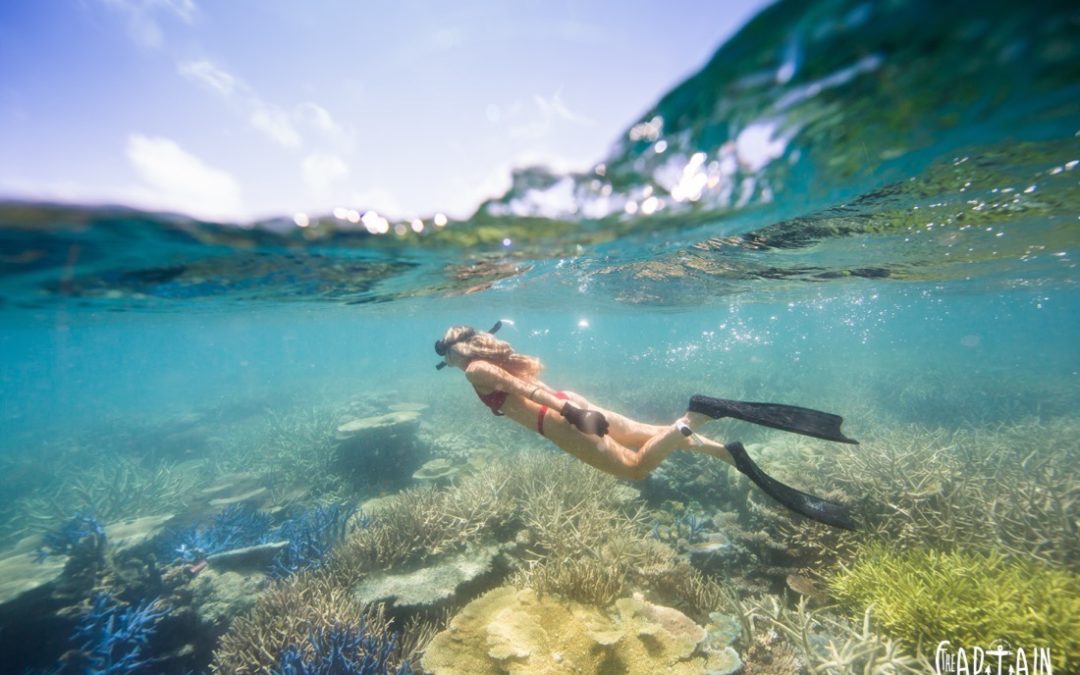











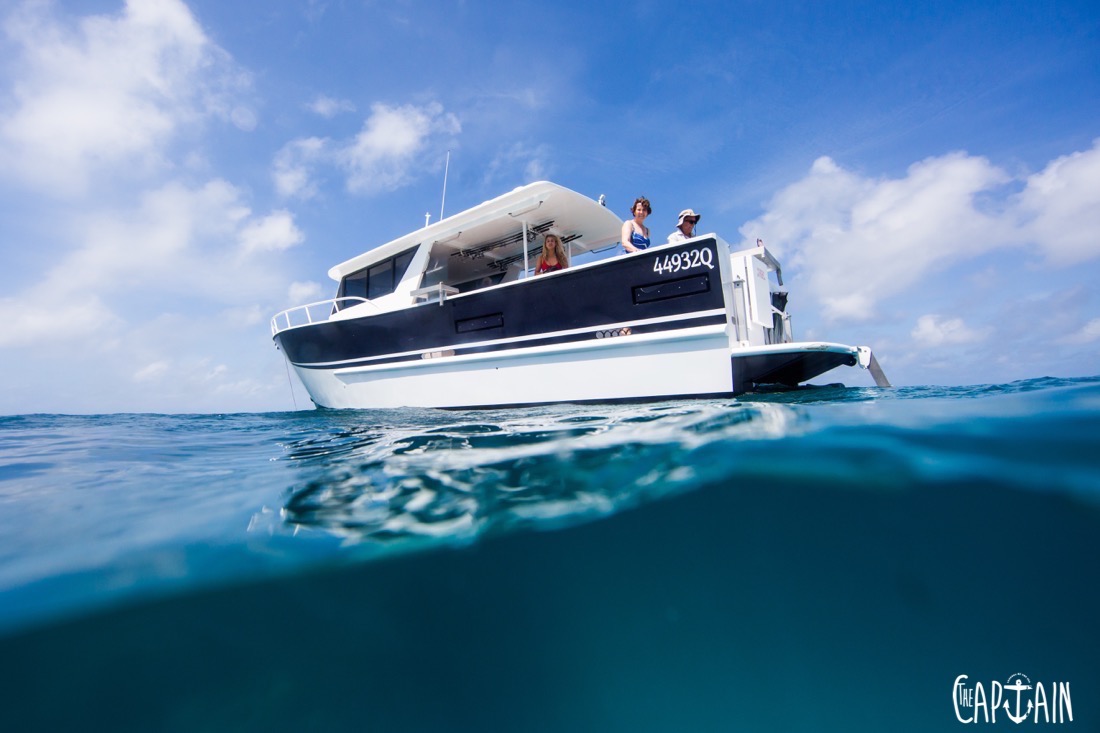








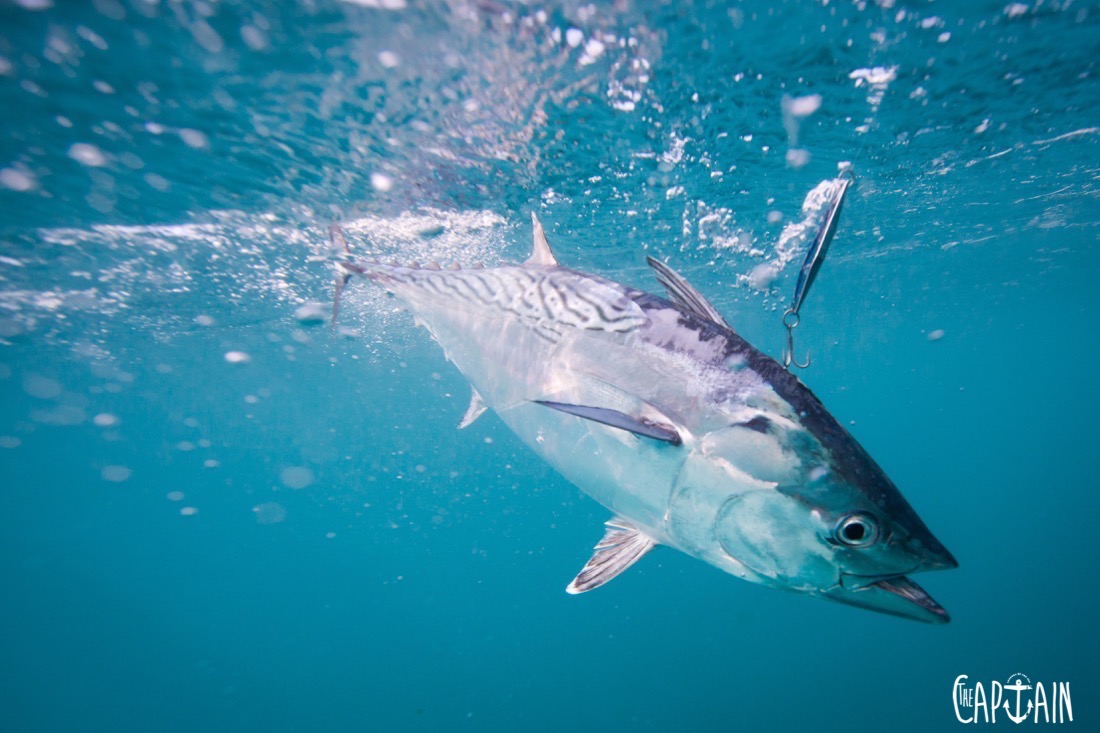









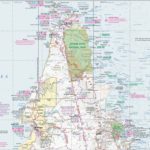
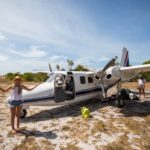
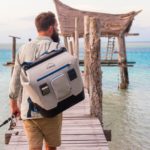
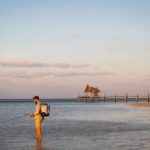
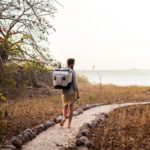

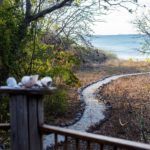
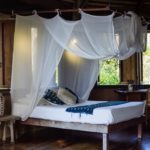
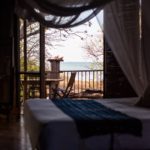
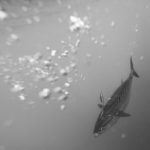
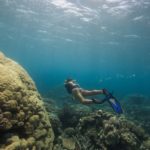
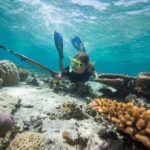
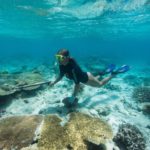
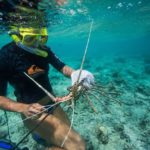
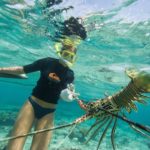

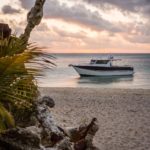
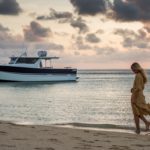
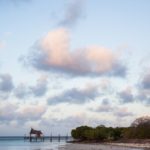
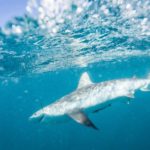
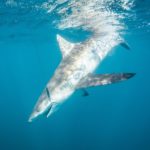
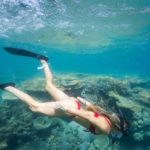
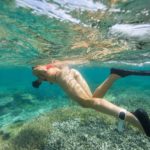
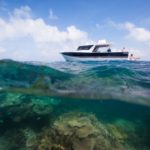
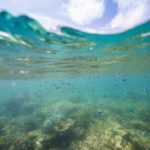
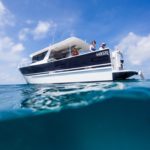
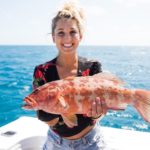
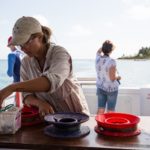
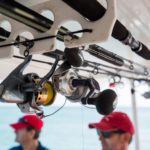
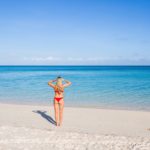
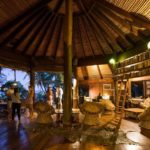
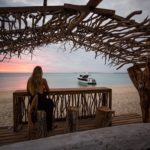
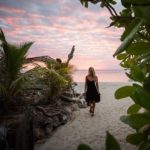
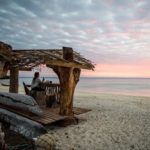
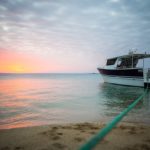
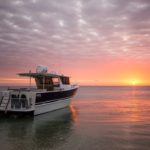
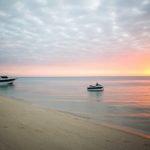
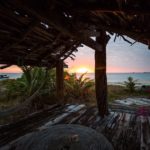
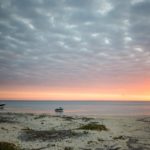
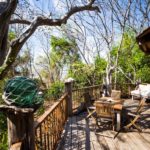
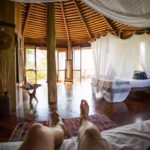
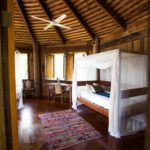

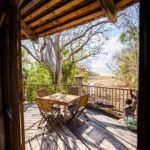

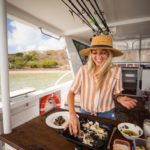
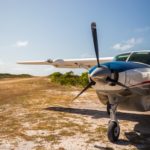
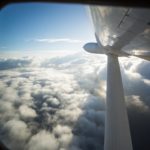
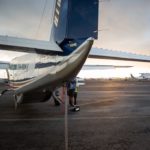

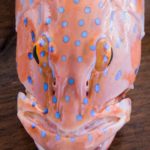
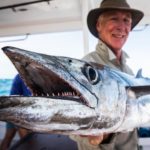
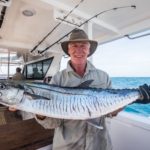
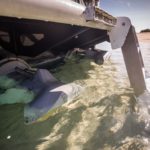
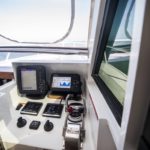
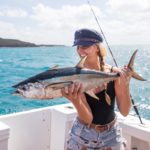
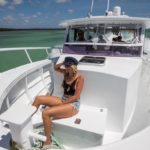
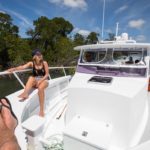
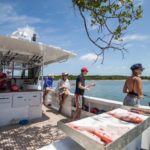
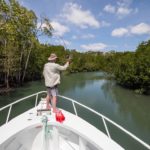
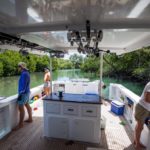
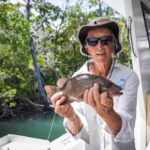
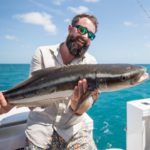
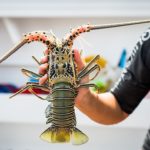
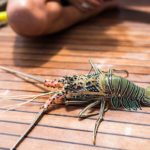
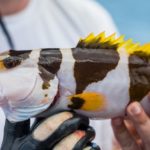
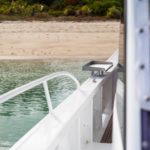
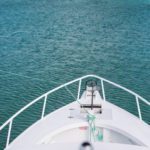
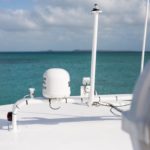
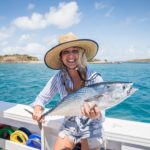
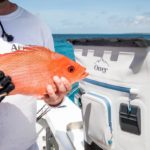
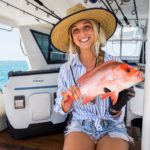
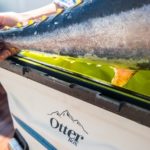
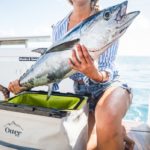
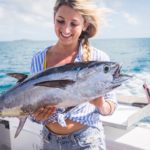
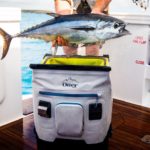
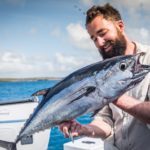
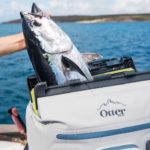
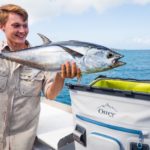
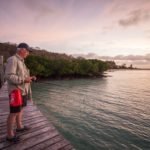
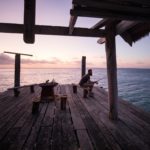
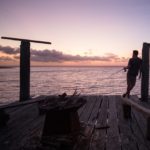

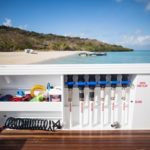
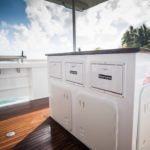
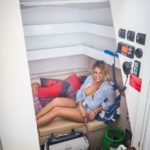
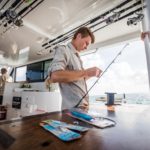
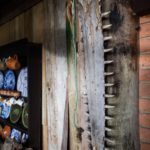
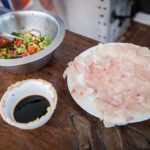
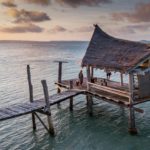
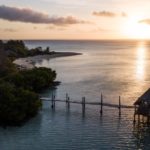
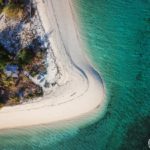
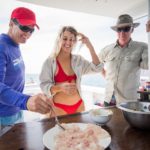
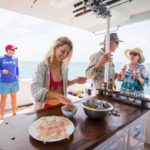
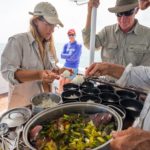
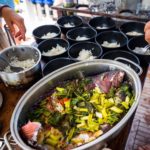
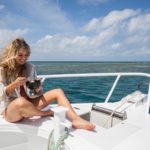
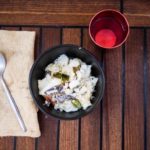
Recent Comments